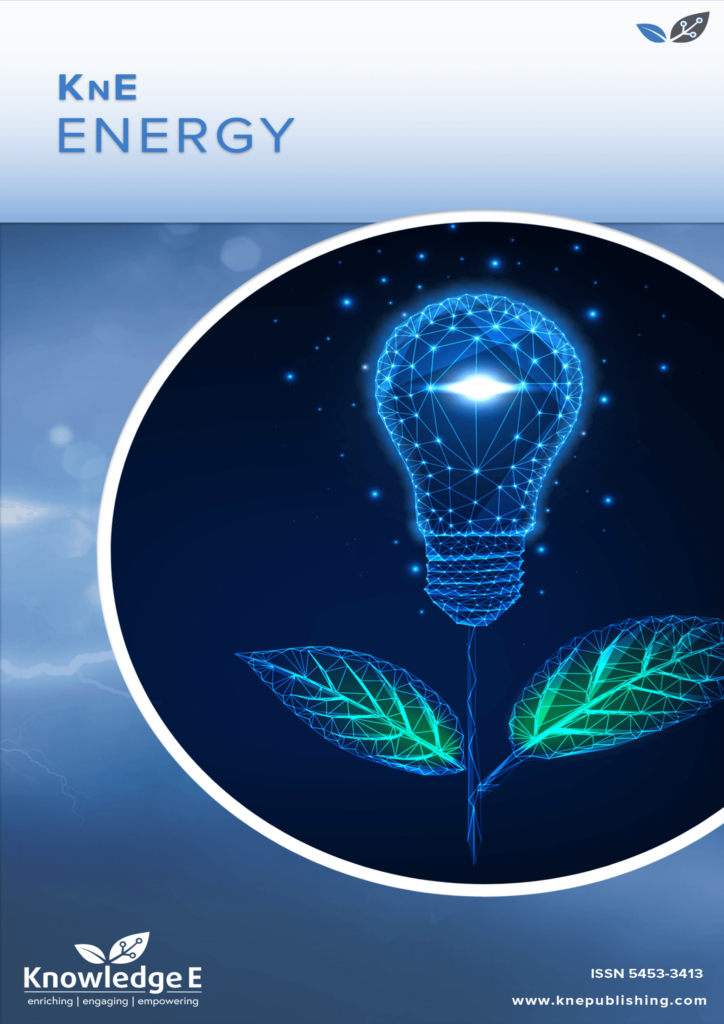
KnE Energy
ISSN: 2413-5453
The latest conference proceedings on energy science, applications and resources
Use of Nanocomposite Material Based on Graphene Oxide and Silver Nanoparticles in Research of Blood Erythrocytes in Various Diseases
Published date:Apr 17 2018
Journal Title: KnE Energy
Issue title: The 2nd International Symposium "Physics, Engineering and Technologies for Biomedicine"
Pages:212–222
Authors:
Abstract:
The electrical and structural properties of a nanocomposite material based on silver nanoparticles and graphene oxide were investigated. Using electron and atomic force microscopy it was shown that the nanoparticles formed predominantly have sizes from 60 to 100 nm. Measurements of the current-voltage characteristics showed electrical conductivity values significantly exceeding the parameters of the initial graphene oxide. The prepared nanocomposites were used for scanning by electron microscopy (SEM) of blood samples of sick children with hematuria syndrome and patients of the radiological department of an oncologic dispensary diagnosed with cervical cancer. The formation of nanosize objects on the surface of erythrocytes is revealed. The size of these volumes is comparable to the size of the viruses. Results of these studies can indirectly confirm an assumption of authors about possible transportation of viruses by erythrocytes to various organs and viral etiology of renal diseases with the hematuria syndrome and cervical cancer.
Keywords: graphene, graphene oxide, silver nanoparticles, structural and electrical properties, nephropathy, diagnostics.
References:
[1] G.V. Maksimov, S.N. Mamaeva, S.R. Antonov, Y.A. Munkhalova, I.V. Kononova, I.Yu. Sheikin. “Measuring Erythrocyte Morphology by Electron Microscopy to Diagnose Hematuria,” Measurement Techniques, vol. 59, no3, pp. 327-330, 2016.
[2] S.N. Mamaeva, Y.A. Munkhalova, I.V. Kononova, A.A. Dyakonov, V.N. Koryakina, V.V. Shutova, G.V. Maksimov. “Issledovanie ehritrocitov krovi metodom rastrovoj ehlektronnoj mikroskopii,” Russian Journal Vestnik Mordovskogo universiteta, vol.26, no 3. - pp. 381-390, 2016.
[3] G.V. Maksimov, S.N. Mamaeva, S.R. Antonov, Y.A. Munkhalova, I.V. Kononova, I.Yu. Sheikin. “Measuring erythrocyte morphology by electron microscopy to diagnose hematuriaю Metrology,” Quarterly supplement to the journal Measuring Techniques, no. 1. pp.47-52, 2016.
[4] W. S. Hummers, R. E. Offeman. ”Preparation of Graphitic Oxide”, Journal of the American Chemical Society, vol. 80, no 6, pp. 1339, 1958.
[5] H. Yu, B. Zhang, C. Bulin, R. Li, R. Xing. “High-efficient Synthesis of Graphene Oxide Based on Improved Hummers Method,” Sci Rep., vol. 6, pp. 36143 (1-7), 2016.
[6] S. N. Alam, N. Sharma, L. Kumar. “Synthesis of Graphene Oxide (GO) by Modified Hummers Method and Its Thermal Reduction to Obtain Reduced Graphene Oxide (rGO)*,” Graphene, vol.6, pp.1-18, 2017.
[7] A.C. Ferrari, J.C. Meyer, V. Scardaci, C. Casiraghi, M. Lazzeri, F. Mauri, S. Piscanec, D. Jiang, K. S. Novoselov, S. Roth, A.K. Geim. “Raman Spectrum of Graphene and Graphene Layers,” Phys. Rev. Letters, vol. 97, pp.187401 (1-4), 2006.
[8] P. Klar, E. Lidorikis, A. Eckmann, I. A.Verzhbitskiy, A. C. Ferrari, C. Casiraghi “Raman scattering efficiency of graphene,” Physical Review B, vol. 87, pp. 205435 (1-12), 2013.
[9] X. D